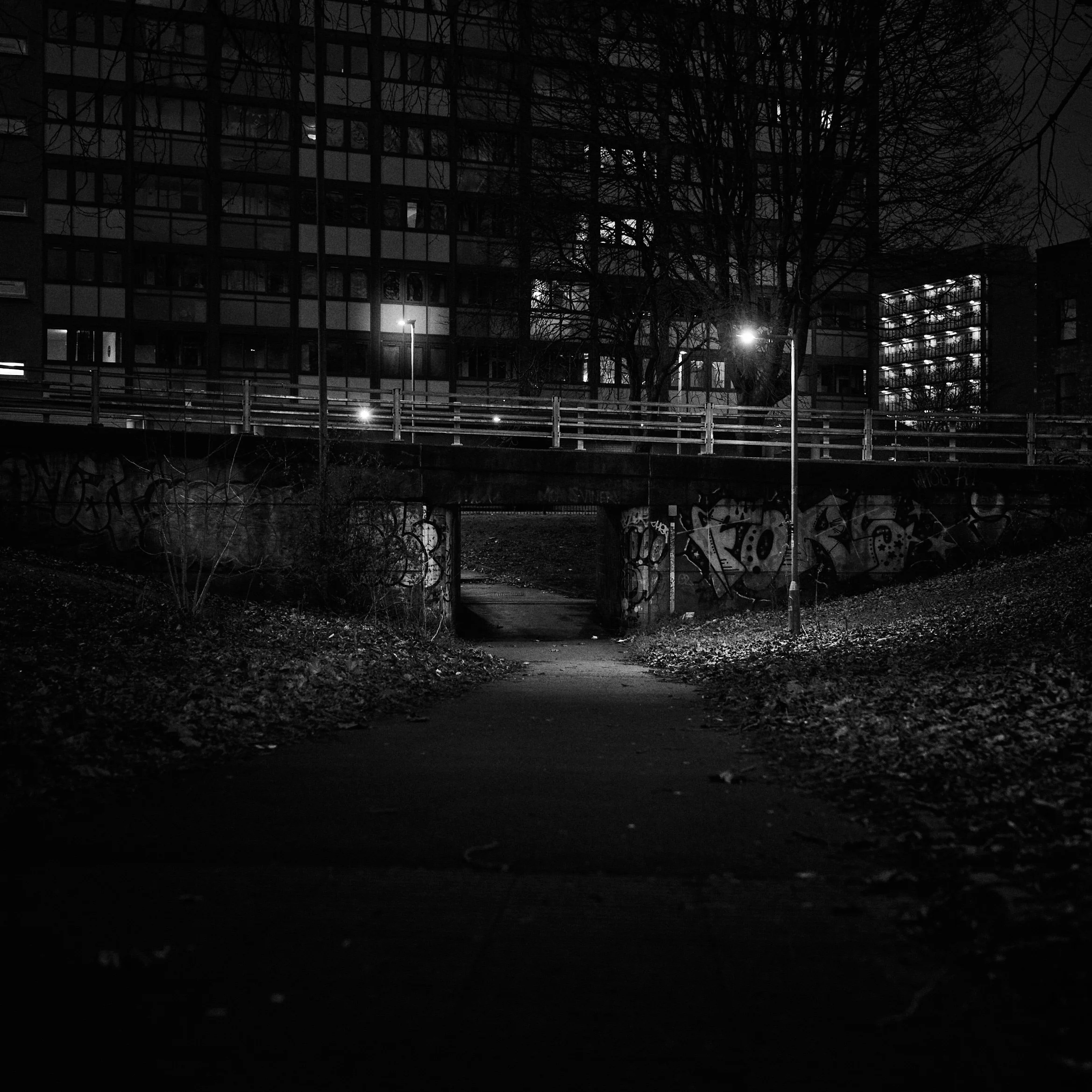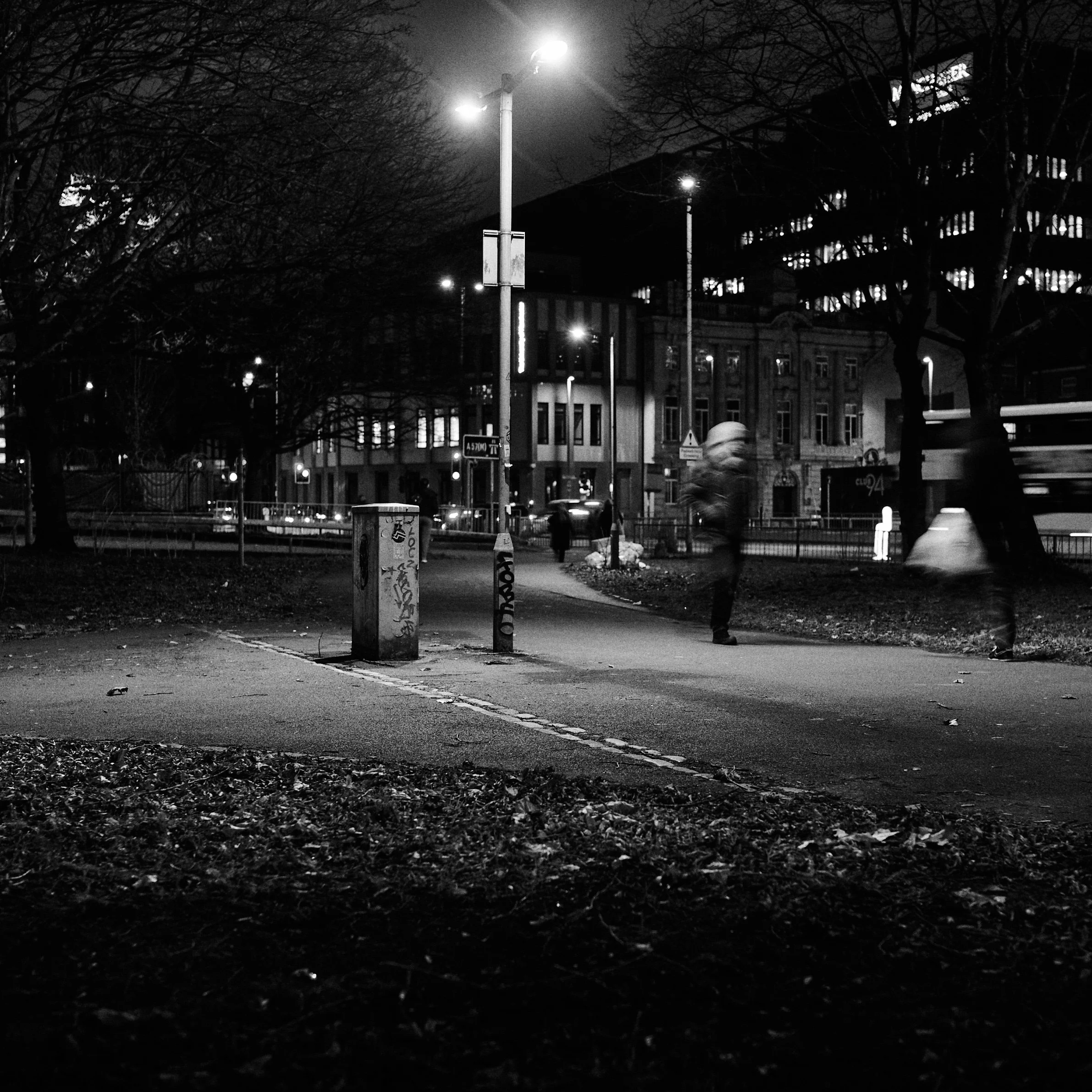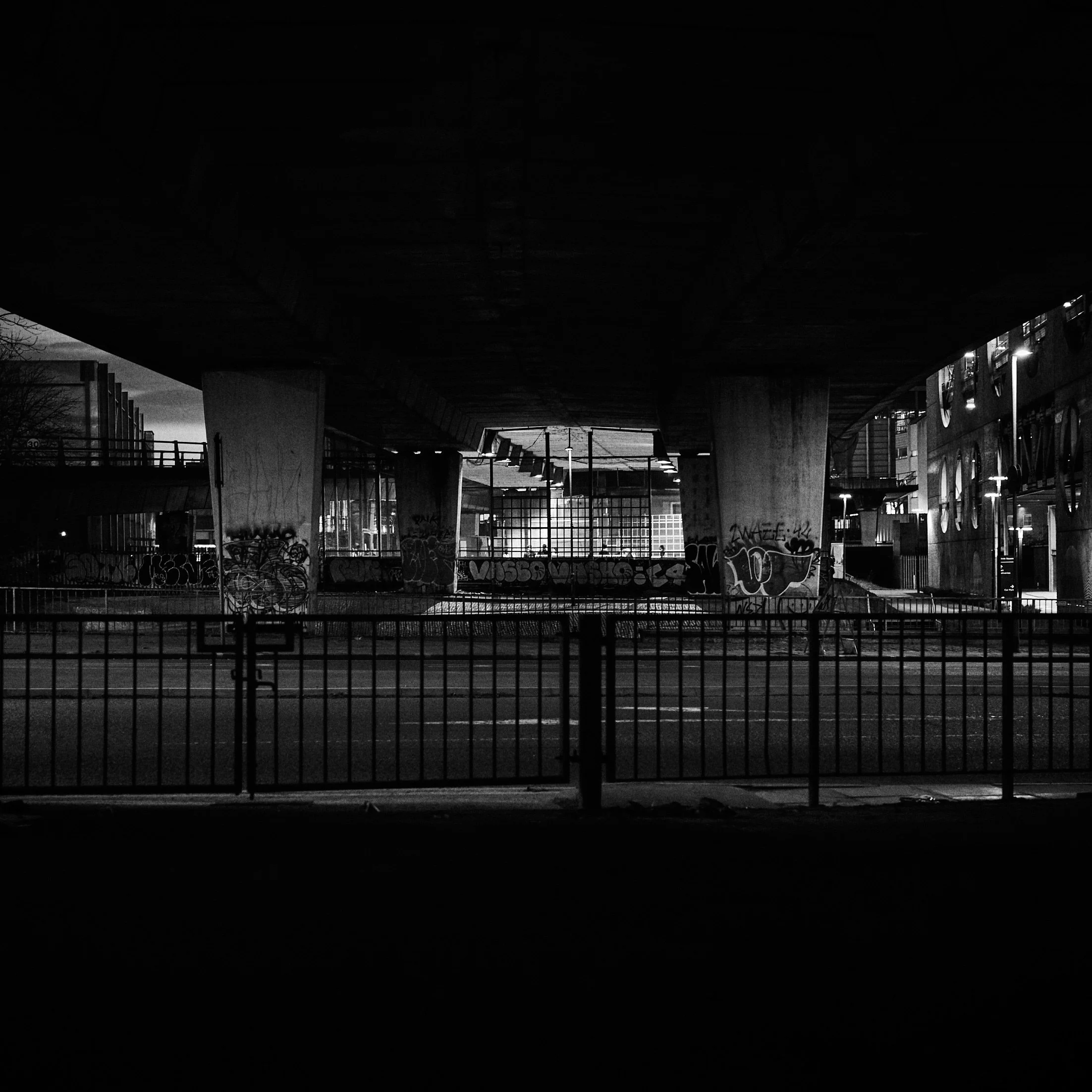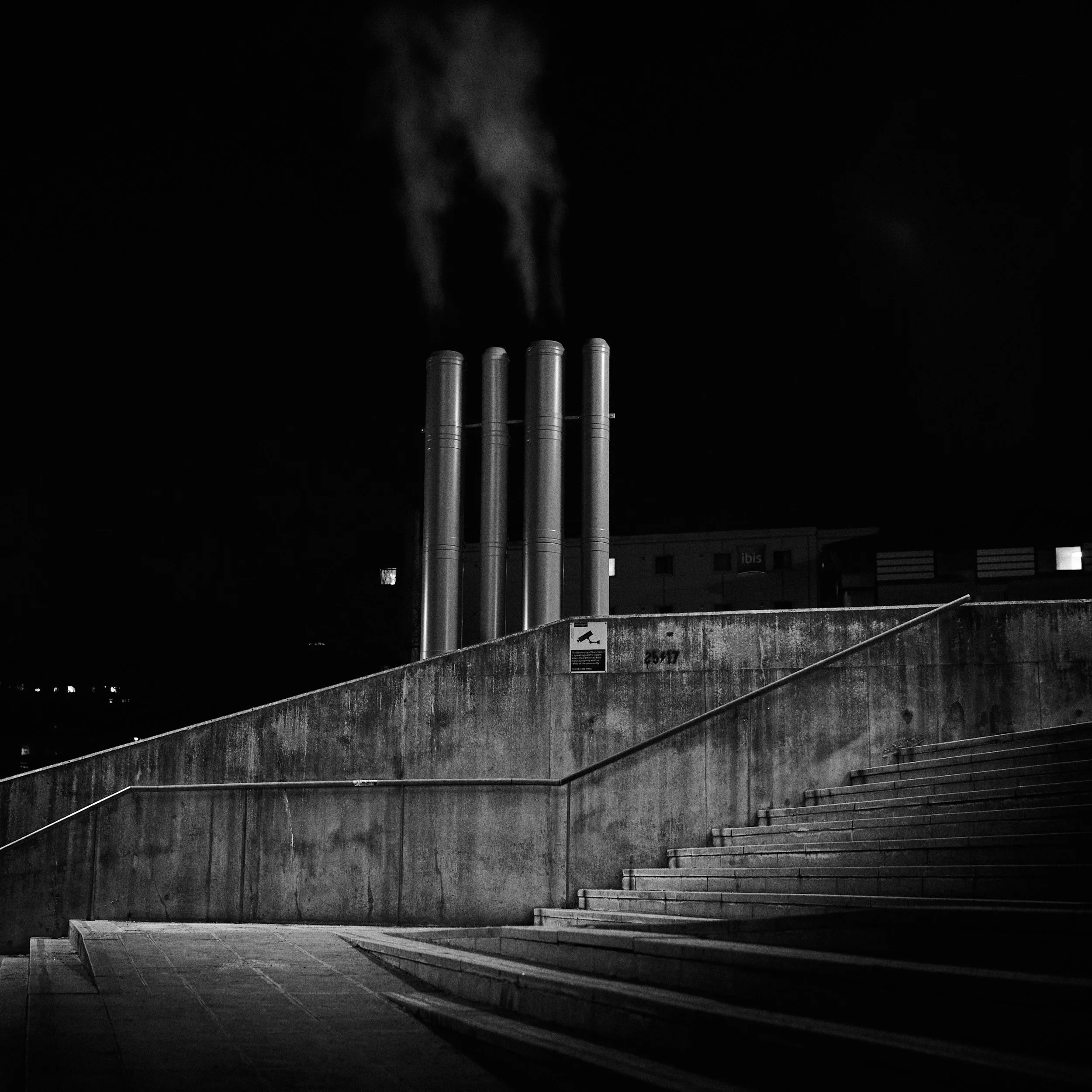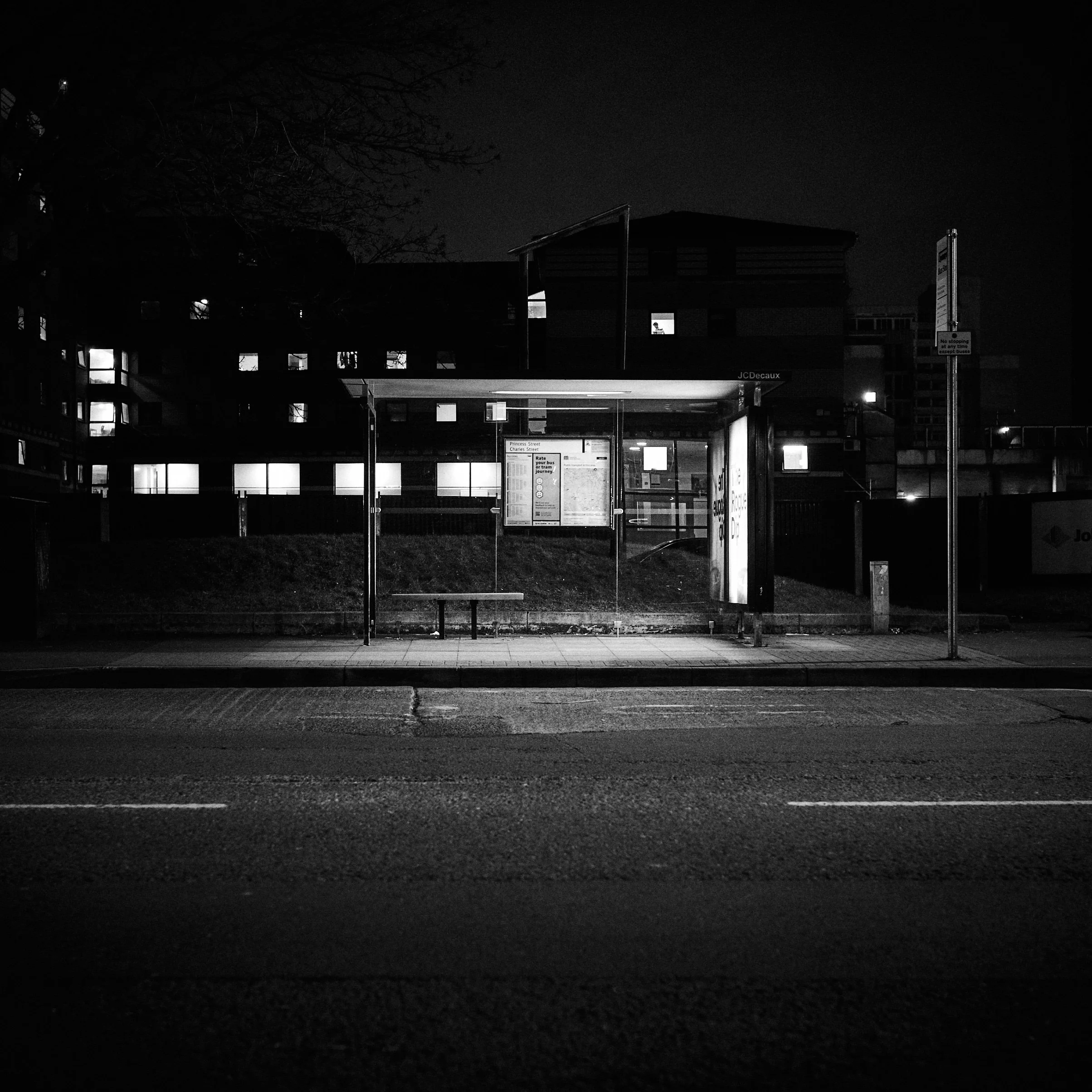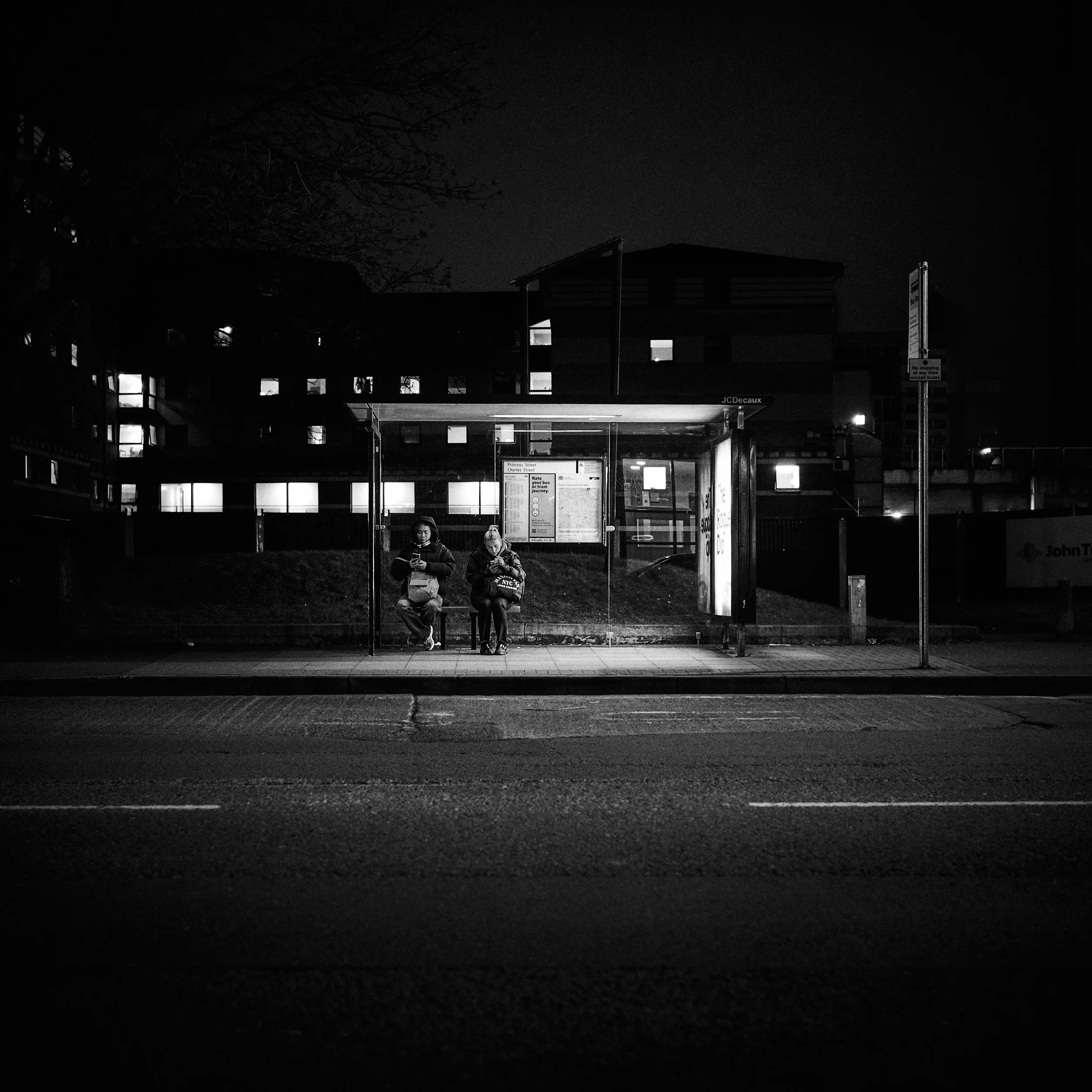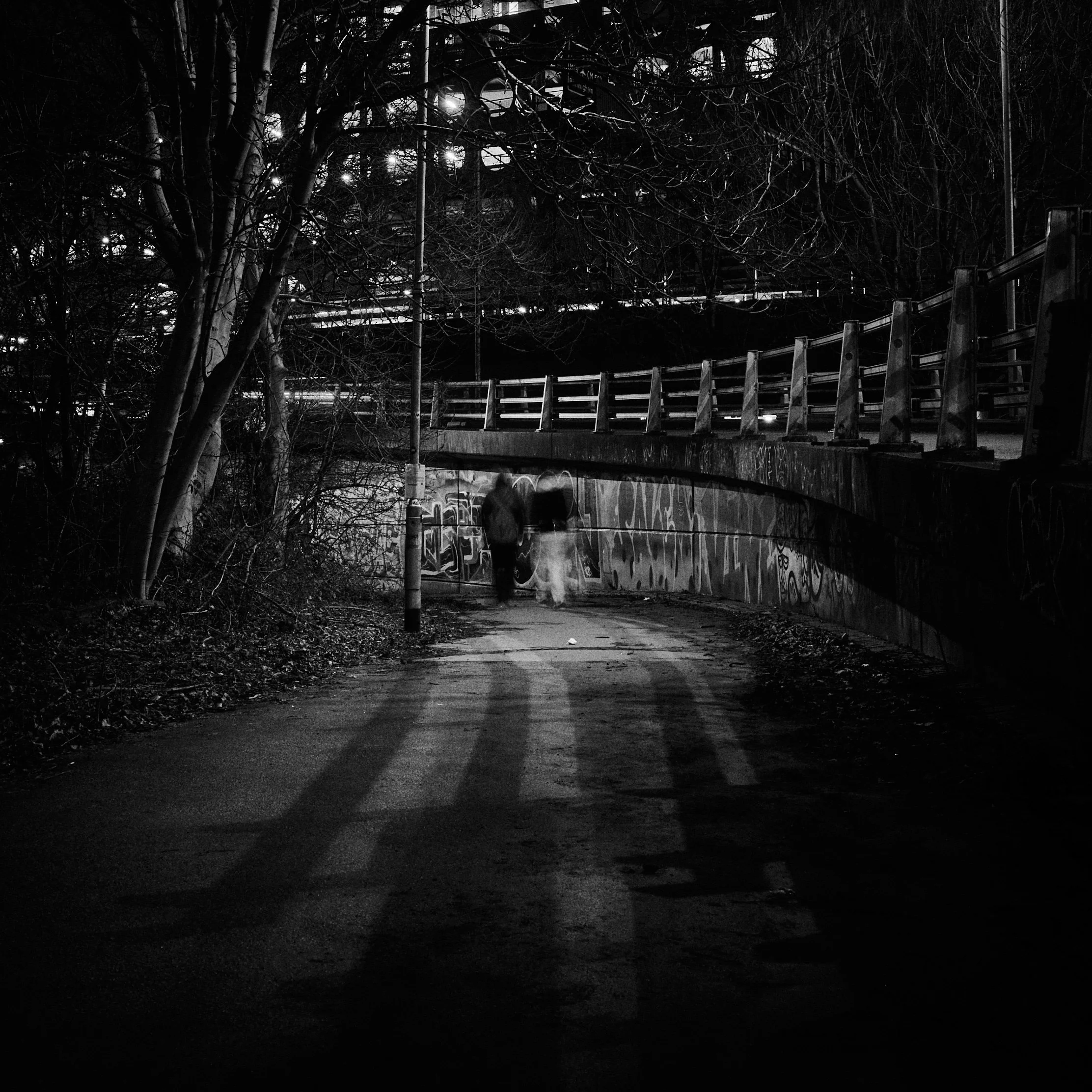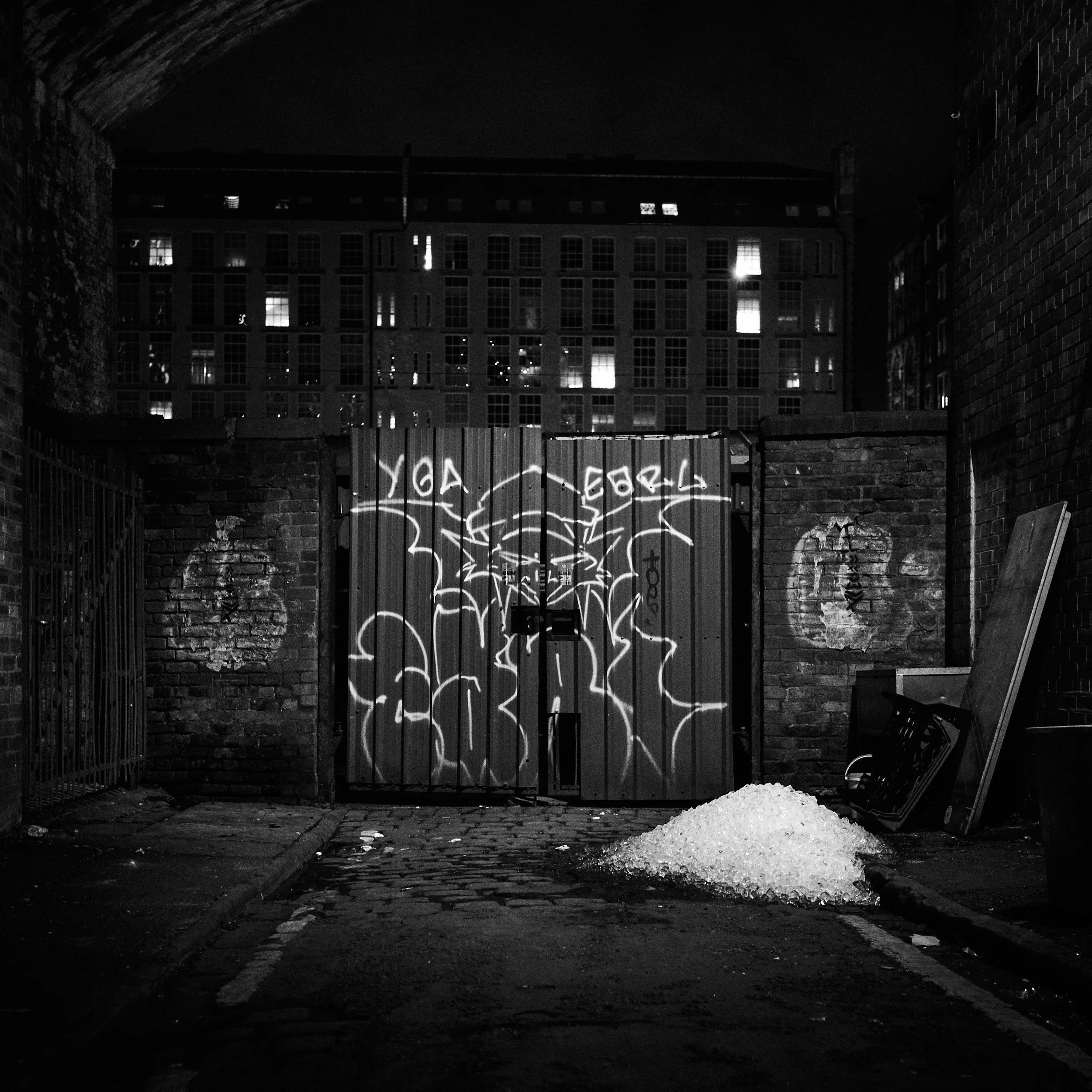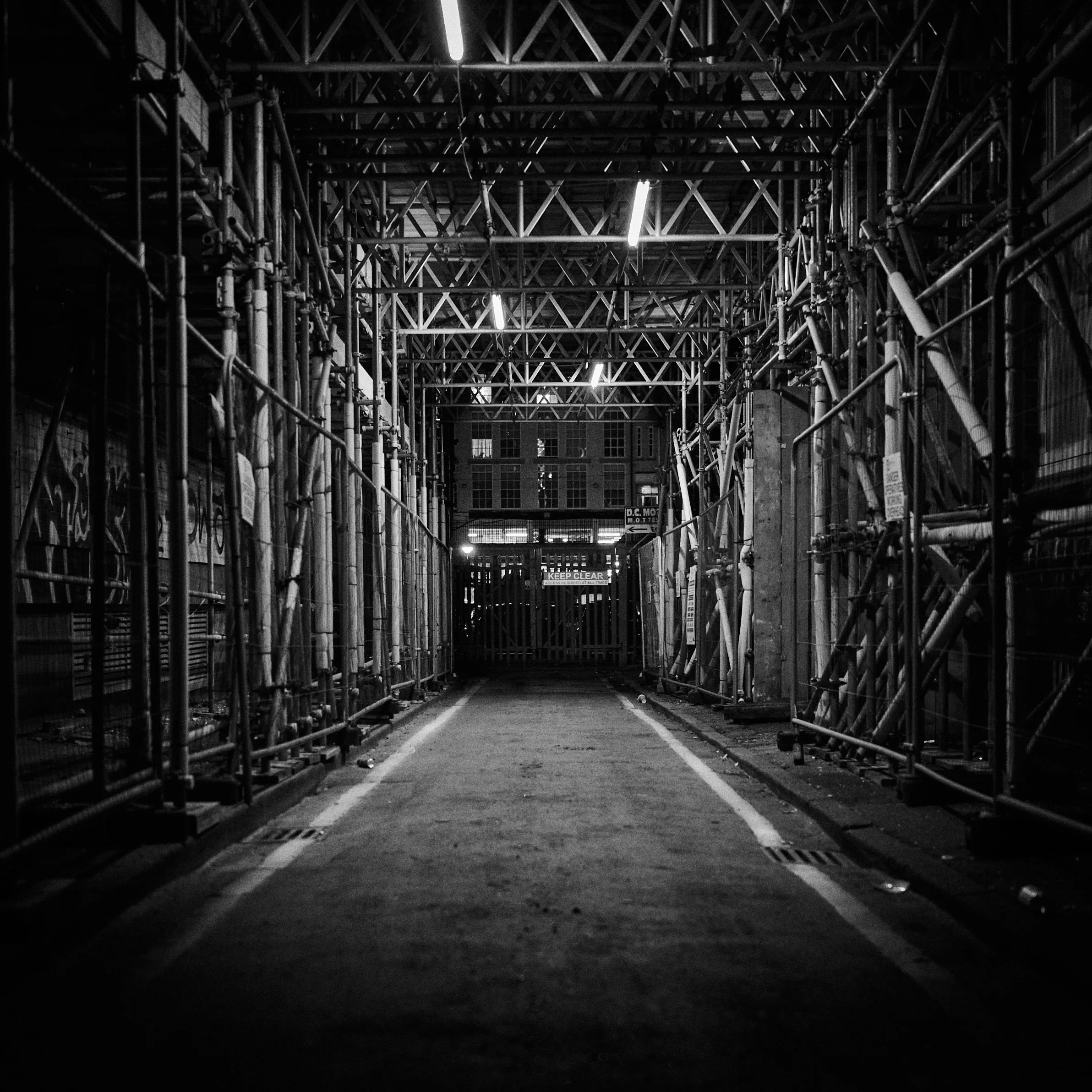Tales from the Loop: Into the Shadows
Chapter Two: What Changes in the Night
The loop at night, and the moment everything started to shift.
A couple of days after my first walk, my friend Yang and I decided to head out for a night photography session. One of the few joys of winter: you don’t have to wait long for darkness to fall.
We wrapped up warm, grabbed our tripods, and I led us back to the loop near the university. Yang was keen to shoot some buildings; I wanted to see how the atmosphere of the place changed once the sun disappeared. It was around 5pm—right as rush hour hit—but as we walked away from the noise and chaos of Oxford Road, the crowd began to thin quickly.
From Blue Hour to Isolation: How the Loop Transformed
The sun sank below the buildings and streetlights flickered on as the city slipped into blue hour. The loop transformed—what had felt overlooked during the day now felt quietly ominous. Even with the occasional passerby on their way home, there was a stillness, a charged sense of isolation that hadn’t been as present before. The space felt like somewhere you shouldn’t linger too long.
Using Long Exposure to Translate Atmosphere
I set up my tripod and pointed my camera toward the bridge near the Brunswick protest camp. Watching the scene on the back of my camera, I felt a subtle unease. The light, the silence, the sense of being slightly out of sight—it all added to the mood. So naturally, we decided to stay and shoot.
I focused on the intersection where footpaths snake beneath the bridges and roadways. I started experimenting with long exposures and depth of field—trying to find a visual language to reflect the harsh, cold, almost desolate feeling of the place.
Observing the Overlooked: A Detail in Passing
Halfway up a set of concrete steps, I noticed a set of chimneys peeking up behind a wall. I took a few shots but didn’t dwell on them—more drawn to the empty bus stop nearby than the strange structures.
We looped around the area slowly, the walk that would normally take twenty minutes stretching into a two-hour exploration. Yang focused on the architecture; I kept returning to the atmosphere—trying to figure out what it was about this loop that was pulling me in.
Letting the Work Settle: Rethinking the Image in Black and White
Afterwards, I let the images sit for a few days. I try not to review my work immediately—it can be either too deflating or too distracting. When I finally opened the session in Capture One, I started making selects and testing edits. And that’s when something clicked.
The colour wasn’t helping. It softened things too much. Stripping it away—rendering everything in stark black and white—felt more honest. It mirrored how I’d felt in the space: uncertain, exposed, watching shadows stretch in the sodium glow of the streetlights.
Still Looking: When Meaning Hasn’t Yet Caught Up
I showed the edits to my tutor, still unsure what the images were about. I found myself reaching for themes, trying to justify what I was doing—why I kept coming back to this same stretch of road, this overlooked artery on the edge of the city. But I wasn’t there yet.
I was still looking.
If you haven’t read the beginning of the series, check out: Chapter One: Finding the Loop
